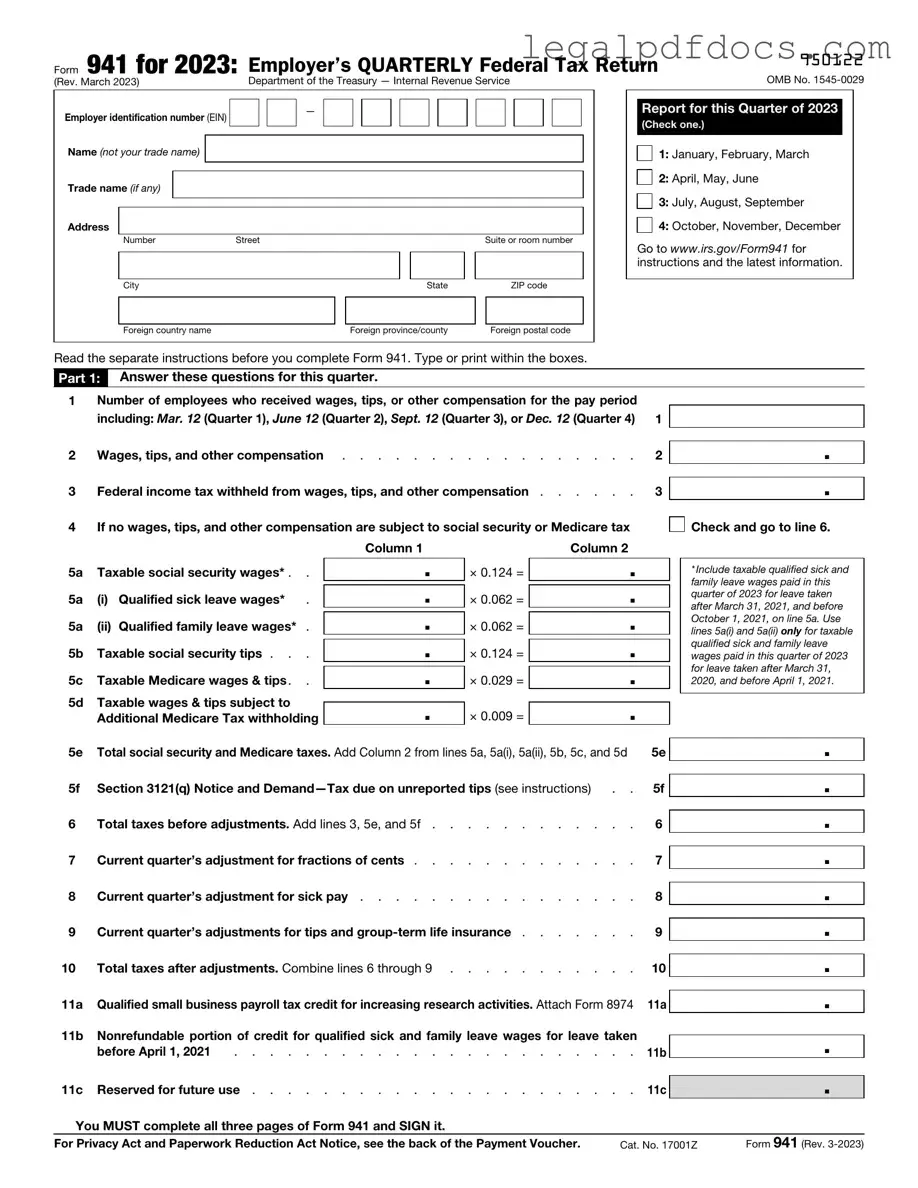Fill Out a Valid IRS 941 Template
The IRS Form 941 is a quarterly tax form that employers use to report income taxes, Social Security tax, and Medicare tax withheld from employee wages. This essential document ensures that the federal government receives the necessary contributions for social programs and helps maintain compliance with tax regulations. Understanding how to accurately complete this form is crucial for every employer, so take the next step by filling out the form through the button below.
Open IRS 941 Editor Here
